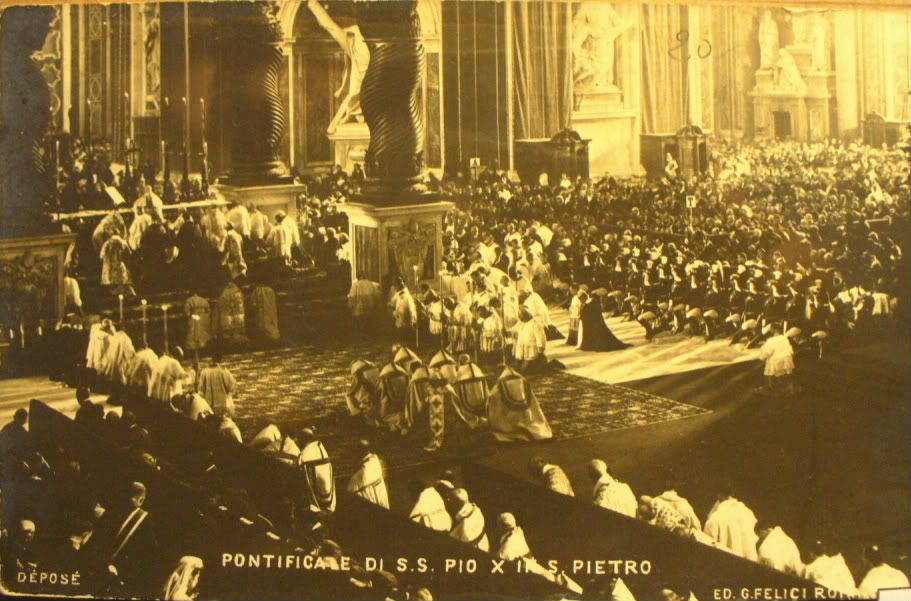
Mass of Pope St. Pius X in St. Peters Basilica
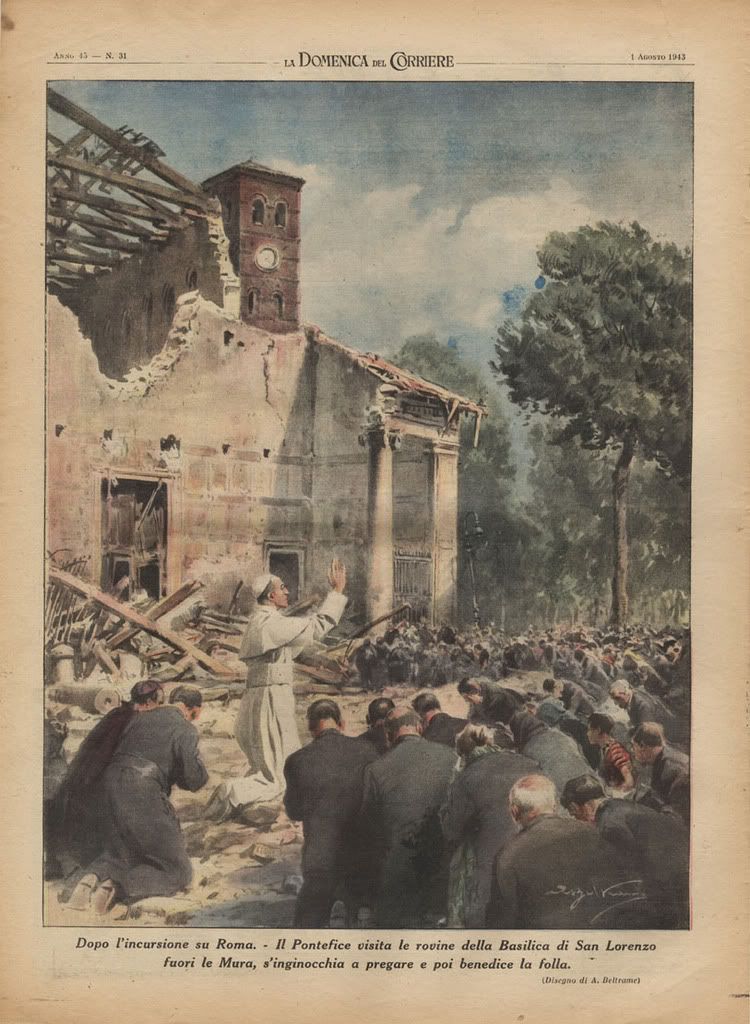
Pius XII: War in Rome
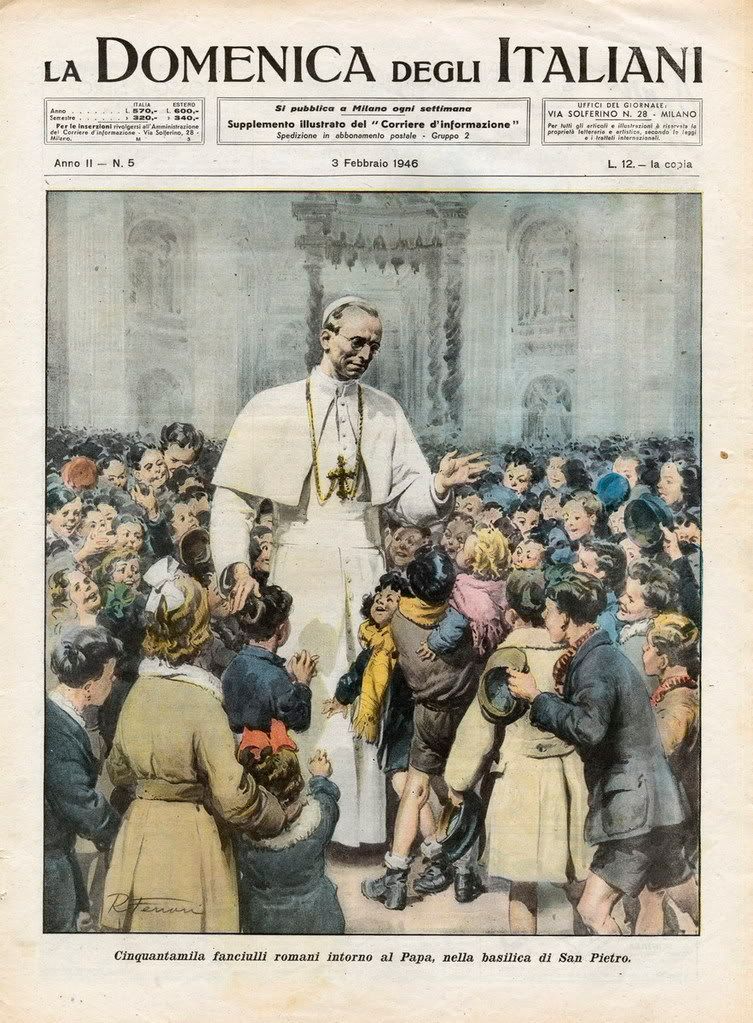
Pius XII: Audience in St. Peters Basilica
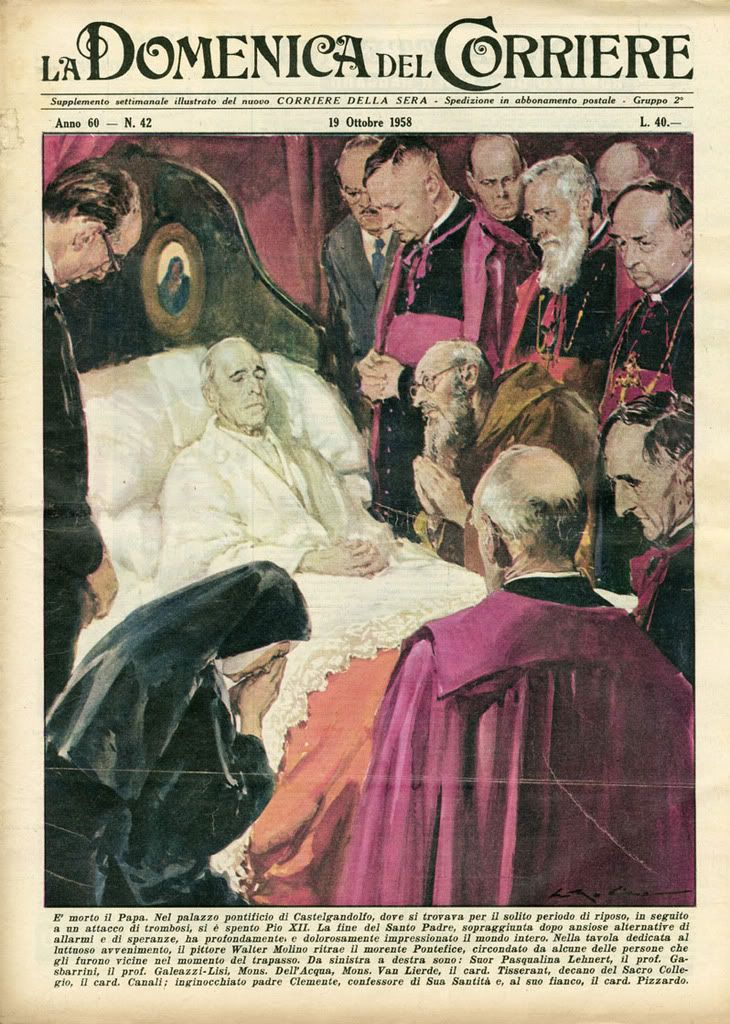
Death Bed of Pius XII
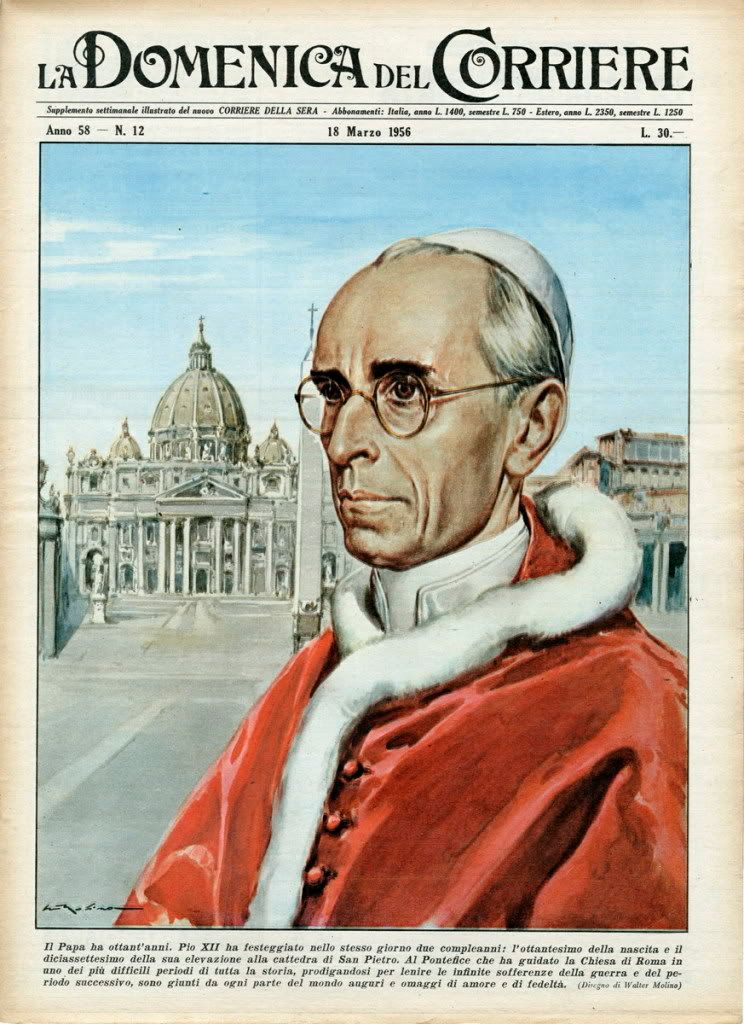
Pius XII: Bishop of Rome

Christ the Teacher with Saints & Pope Leo XIII

Leo XIII Card








The blessed and joyous time of Christmas is here again. So, I’ll just take the opportunity to thank all of our viewing and listening family for allowing us into your homes. I don’t take that for granted. I am honestly grateful to you for allowing us to serve you in that way.
As I look out the windows of my home in Montana it sure is “beginning to look a lot like Christmas.” We have about a foot of snow and it’s been below zero for about ten days. Two of my dogs are under my desk with their heads resting on my feet--looking like those big fuzzy slippers that little kids sometimes wear.
Christmas is, of course, the best time to recall that Jesus, the Son of God, in fact was born in a poor stable or cave on a cold night—“for us men, and for our salvation.” Amidst the escalating uncertainty and chaos of the modern world we must sit still for a moment and remember what really matters.
In recent years major corporations have been vaporized in the twinkling of an eye. It’s a sign of the times, but recall that what really matters is that it was the twinkling of a star that led shepherds and wise men to the One who is the Light of the world.
In recent years the biggest accounting firm in the world ceased to be over night. They don’t account for anything today, but it honestly doesn’t matter. What really matters is that on a cold night two millennia ago the God who loves us was born in Bethlehem and laid in a manger by the Mother who loves Him.
In recent years the unthinkable has happened--major banks and financial institutions have ceased to be. That doesn’t matter either because the truly unthinkable happened on the first Christmas Eve long ago when the God who always was and will never cease to be came to show us the depth and breadth of His love.
In recent years I have been accused of being a “prophet of doom, and a pessimist.” I can understand this criticism, but it really isn’t true. I am a realist, and as a priest and Catholic/Christian of necessity must share in the prophetic dimension of Christ. The United States, and the entire world for the most part, is in many ways precipitating its own demise. That matters, and we must do all we can to “fight the good fight,” but what truly matters is the state of your soul and mine because in the end that will determine how we live forever, and compared to that nothing else really matters.
Things may go from bad to worse. It may well go from uncomfortable to dangerous to live your Catholic/Christian faith in a world unraveling rapidly due to one bad moral choice after the other. Remember that it will not be the first time if Christians are persecuted, even imprisoned and executed. “The blood of martyrs is the seed of Christians.” The Western world is too fat and lazy, in the secular order and even in the religious. Perhaps a jolly good persecution may be what it takes for people to decide to live their faith, rather than go along with what they know to be a sick society.
In any event, don’t let it get you down. Whatever happens, stay close to Jesus and Mary. Remember that our God is not against you. He is for you, and He will be with you through all of the ups and downs of life. He will be with you in sickness and in health; in good times and in bad; and when death comes knocking at your door He will be there to comfort you and lead you safely home. Having fought the good fight and run the race to the finish line, you will surely hear those beautiful words:
“WELL DONE MY GOOD AND FAITHFUL SERVANT! NOW AT LAST ENTER INTO THE JOY OF YOUR MASTER’S HOUSE.”
A most blessed and merry Christmas and a holy, happy, and healthy New Year to each and all of you!
Fr. John Corapi











Church of our SaviourPosted by Shawn Tribe on 6.12.08"
Park and 38th Street
New York, NY 10016NEW MASS SCHEDULE
Following the Vatican's instructions and in response to the request of some of the faithful, the traditional Latin Mass will be offered in our parish every Sunday beginning January 4 at 9 AM. Because of canonical regulations which limits the number of Masses which a priest normally offers, the 7:30 and 9:30 will be combined. The new 9 AM celebration will be a Missa Cantata, and books will be provided to assist worshipers in following the texts, along with an explanation of the ritual. This will also provide more time for confessions before the 11AM Mass which remains the principle Mass of Sunday. The rest of the Mass schedule remains the same, with the Vigil mass at 5PM on Saturday, and other Masses at 12:30 and 5PM. Some may want to attend the 9AM in addition to the Mass they normally attend. The church will open at 8PM on Sunday for preparatory prayer and private devotion.
"To cook them uniformly, put the thickest pieces into the water a few moments before the thin, tapered ones. 2. Drain and cut the carrots lengthwise into sticks about 1/4 inch thick. Place in a small, but deep serving dish. 3. Mash the garlic clove with a heavy knife handle, crushing it just enough to split it and to loosen the skin, which you will remove and discard. Bury the peeled clove among the carrot sticks. Add the oregano, salt, a few grindings of pepper, the wine vinegar, and just enough olive oil to cover the carrots."Hazan, M. (2004). Essentials of classic Italian cooking. New York: Alfred A. Knopf.
Radley Balko | December 6, 2008, 1:28pm
"Like Mark Draughn, I've been somewhat skeptical of Barry Cooper, the former drug cop turned pitchman for how-to-beat-the-cops videos. He comes off as more of a huckster than a principled whistle-blower, which I think does the good ideas he stands for (police reform) more harm than good.
But damn. I have to hand it to him. This might be one of the ballsiest moves I've ever seen.
To clarify just a bit, according to Cooper, there was nothing illegal going on the bait house, just two evergreen trees and some grow lamps. There was no probable cause. So a couple of questions come up. First, how did the cops get turned on to the house in the first place? Cooper suspects they were using thermal imaging equipment to detect the grow lamps, a practice the Supreme Court has said is illegal. The second question is, what probable cause did the police put on the affidavit to get a judge to sign off on a search warrant? If there was nothing illegal going on in the house, it's difficult to conceive of a scenario where either the police or one of their informants didn't lie to get a warrant.KopBusters rented a house in Odessa, Texas and began growing two small Christmas trees under a grow light similar to those used for growing marijuana. When faced with a suspected marijuana grow, the police usually use illegal FLIR cameras and/or lie on the search warrant affidavit claiming they have probable cause to raid the house. Instead of conducting a proper investigation which usually leads to no probable cause, the Kops lie on the affidavit claiming a confidential informant saw the plants and/or the police could smell marijuana coming from the suspected house.
The trap was set and less than 24 hours later, the Odessa narcotics unit raided the house only to find KopBuster’s attorney waiting under a system of complex gadgetry and spy cameras that streamed online to the KopBuster’s secret mobile office nearby.
Cooper chose the Odessa police department for baiting because he believes police there instructed an informant to plant marijuana on a woman named Yolanda Madden. She's currently serving an eight-year sentence for possession with intent to distribute. According to Cooper, the informant actually admitted in federal court that he planted the marijuana. Madden was convicted anyway.
The story's worth watching, not only to see if the cops themselves are held accountable for this, but whether the local district attorney tries to come up with a crime with which to charge Cooper and his assistants. I can't imagine such a charge would get very far, but I wouldn't be surprised to see someone try.
Here's some local media coverage:"
 MOSCOW, December 6 (RIA Novosti) - The governing body of the Russian Orthodox Church, the Holy Synod, elected on Saturday Metropolitan Kirill of Smolensk and Kaliningrad as the interim leader of the Church.
MOSCOW, December 6 (RIA Novosti) - The governing body of the Russian Orthodox Church, the Holy Synod, elected on Saturday Metropolitan Kirill of Smolensk and Kaliningrad as the interim leader of the Church. Patriarch of Moscow and All Russia Alexy II, who led the Russian Church for 18 years, died at the age of 79 in his residency near the capital on Friday. His body will be lying in state in the Cathedral of Christ the Savior from Saturday evening.
Alexy II will be buried on Tuesday in the Annunciation side-chapel of Moscow's Epiphany Cathedral.
Alexy II became patriarch of the Russian Orthodox Church in 1990, shortly before the collapse of the atheist Soviet Union, and presided over a religious revival in Russia, with thousands of churches and monasteries being restored and hundreds of new ones built across the country.
A national council of bishops, priests, monks and laymen should be summoned in six months to elect a new patriarch for the Russian Church.

Vatican City, Dec 5, 2008 / 10:26 pm (CNA).- Upon receiving the letters of credence from the new ambassador of Argentina to the Holy See this morning, Pope Benedict XVI stressed that the Church seeks “to promote the dignity of human beings and to elevate them for the good of everyone.” He also recalled the 30 year anniversary of the papal intervention to resolve a dispute between Chile and Argentina.
Speaking to the new ambassador Juan Pablo Cafiero, the Pope described Argentina as a “place of profound Christian traditions which have planted and cultivated important customs.”
To demonstrate this, the Holy Father mentioned that the young Mapuche Indian, Blessed Ceferino Namuncura was "a splendid sign of how Christ, Who truly is the Word incarnate, is not foreign to any culture or person; quite the opposite, the answer for which all cultures long in their hearts is what gives them their true identity, uniting humankind while respecting differences."
Blessed Namuncura was a native of Argentina who began studying to become a Salesian at the age of 11. He traveled to Rome with the hope of becoming a priest, but died in 1905 at the age of 19 from an unknown illness. He was beatified in 2007.
The Holy Father continued his words by focusing on the necessity of the Church to protect the human person. It is through exercising her mission that the Church seeks “to promote the dignity of human beings and to elevate them for the good of everyone,” the Pope told the Argentine prelate.
“Without seeking to become a political player she aspires, with the independence of her moral authority, to co-operate faithfully and openly with all leaders of the temporal world in the noble goal of achieving a civilization of justice, peace, reconciliation, solidarity, and of those other ideals that can never be rescinded or left at the mercy of party consensus, as they are engraved in the human heart and correspond to truth."
The current century, the Pope said, continually shows us the need “to forge personal, family and social life in keeping with these elemental values, which exalt the individual and the entire community.”
“Among these we must highlight support for the family based on marriage between a man and a woman, ... defense of human life from conception to natural end, eradication of poverty, ... the struggle against corruption, adopting means to assist parents in their inalienable right to educate their children in their own ethical and religious convictions, and promoting young people that they may become men and women of peace and reconciliation."
Thirty years of papal mediation
The Pope concluded by informing his audience that today, “in the presence of a delegation from the Apostolic See,” the presidents of Argentina and Chile will meet “to commemorate the thirtieth anniversary of the meditation undertaken by John Paul II to resolve the dispute between the two nations over the demarcation of their borders at the southern tip of the continent.”
The original dispute between Argentina and Chile involved three islands that each country desired to claim so they could have rights over the territorial seas. Argentina desired to say that it had claims to the Pacific, while Chile wanted territorial rights to the Atlantic.
The disagreement continued to escalate until the two nations were about to declare war on December 24, 1978. However, Pope John Paul II intervened, sending a special delegate, Cardinal Antonio Samore to resolve the dispute. After years of negotiations, the governments of Argentina and Chile agreed to divide the islands in a way that neutralized their claims to territorial oceanic rights.
The Holy Father also noted that a monument currently still in the planning stages “will stand as an eloquent witness and serve to tighten further the bonds of fraternity and understanding of both countries.”
Latin High Mass and Benediction
1962 Missale Romanum
DVD Instruction of the Traditional Latin High Mass
for Priests, Seminarians, Altar Servers, Sacristans, Church Musicians
If your parish is wanting to start the Traditional Latin High Mass this is the DVD for you!
Full-length instructional video of the Latin High Mass with Incense
See the priest’s rubrics of the Missa Cantata (High Mass) demonstrated
Observe the rubrics of liturgical music for the Extraordinary Form
Video of Benediction of the Blessed Sacrament
Stunning choral music by the St. Cecilia Choir of St. John Cantius Church, Chicago.
Evocative rendering of the Gregorian Chant propers and ordinary by the Canons Regular of St. John Cantius
Organ music by Br. Jonathan Ryan, S.J.C., featuring the church’s 101 year-old Kilgen organ.
BONUS video of sacristy preparation and vesting.


MOSCOW (AP) — The Russian Orthodox Church says its Patriarch Alexy II has died.
The church says the 79-year-old died at his residence outside Moscow on Friday. It did not give the cause of death, but the patriarch had long suffered from a heart ailment.
The outspoken patriarch had led the world's biggest Orthodox church since 1990, presiding over a flock that by most estimates numbers two-thirds of Russia's population of 142 million.

From WDTPRS:
"A reader alerted me to this from Lifesite. My emphases and comments:
War between the President and the Catholic Church…..Catholic Bishop: "Go Right Ahead and Arrest Me" Rather than Obey Freedom of Choice Act
By Kathleen Gilbert
Life site
December 2, 2008
ARLINGTON, Virginia, December 2, 2008 (LifeSiteNews.com) – Bishop Paul Loverde of the diocese of Arlington weighed in on the Freedom of Choice Act (FOCA) last week, saying that if he oversaw a Catholic hospital he would neither close the facility nor allow it to perform abortions if FOCA were to become law.
Though there are currently no Catholic hospitals in the Arlington diocese, the bishop spoke defiantly against FOCA, which would force all health care providers to procure abortions at any stage of development, regardless of their moral or religious objection.
“I would say, ‘Yeah, I’m not going to close the hospital, you’re going to arrest me, go right ahead," Bishop Loverde told a group of mostly young adults at a diocesan event, according to a CNS report.
"You’ll have to drag me out, go right ahead. I’m not closing this hospital, we will not perform abortions, and you can go take a flying leap.’” [HUZZAH!]
At a 2007 Planned Parenthood conference, Obama promised that one of his highest priorities as president would be to pass FOCA, rendering illegal all state and federal limits on abortion. This would include abortion clinic regulations, parental notification requirements, bars to taxpayer abortion funding, and the partial–birth abortion ban, in addition to laws protecting doctors’ rights to conscientious objection. [Which might lead to the defining battle of our age.]
“It’s quite a title, let me tell you,” Bishop Loverde said of the Freedom of Choice Act. “It’s a misnomer, it’s neither free nor choice, so I don’t know where they got the name of the act, because it’s just crazy, because it has no freedom, and it has no choice.”
Catholic and pro-life voices have raised the alarm on the unprecedented danger the bill represents for unborn Americans, with Catholic officials particularly concerned that U.S. Catholic hospitals will be forced to close en masse in the face of mandatory abortion.
Chicago Cardinal Francis George, president of the U.S. Conference of Catholic Bishops (USCCB), issued in November a statement on behalf of all Catholic bishops warning Obama that "aggressive pro-abortion policies, legislation and executive orders will permanently alienate tens of millions of Americans, and would be seen by many as an attack on the free exercise of their religion."
One unnamed senior Vatican official recently told TIME magazine that the passage of FOCA would mean "the equivalent of a war" between Mr. Obama and the Catholic Church.
 Going The Distance For Life: Download
Going The Distance For Life: DownloadA campaign debuting Wednesday will use the devil to pitch the rebranding of a New York religous cable service, The Prayer Channel, into NET (New Evangelism Television).
According to a spokesman for LA-based agency Cesario Migliozzi, which is handling the rebranding campaign, TV and radio spots featuring the devil as an "anti-spokesperson" will begin running Dec. 3 and will include MySpace and Facebook pages, a web site www.StopGoodTV.com and NYC bus advertising (the channel is on Time Warner Cable and Cablevision). The spots feature a "vertically challenged" devil trying to warn viewers off the channel.
NET, which is affiliated with the Catholic Archdioses of Brooklyn, programs religious news, lifestyle, entertainment, and kids programming 24/7 to approximately 850,000.
"The Church has used the good vs. evil conflict to promote religion for two centuries,” he added. “In our campaign, the Devil urges viewers to avoid good TV and stick with ‘crappy, pointless, bad television,’ said Ad Agency parnter Michael Migliozzi in announcing the new campaign/ "There is even an online petition fronted by the Devil, in which viewers pledge not to tune into NET."
The Archdiocese's TV arm approved the campaign, according to agency spokesman Ted Faraone.
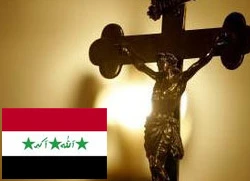
“Christians draws near,” the archbishop said, “and what better time to come together and await the birth of our Lord Jesus?” he asked.
“Our Muslim brethren also await the return of the Christian community. When Muslims are in need and ask us for help, we do not hesitate. I assure you that in Iraq there has always been a great spirit of coexistence and reciprocal respect,” he added.
Archbishop Sako also noted that “towards the middle of December at the offices of the Archdiocese of Kirkuk, a day of prayer and reflection will be held, which will be attended not only by Christians but by leaders of other faiths as well. It will be day of prayer during which hymns and psalms will be read and we will ask Jesus to help us live together, to dialogue and to keep Kirkuk and Iraq free of violence. This will once again show the spirit of coexistence and peace that is found in Iraq.”
“Of course,” he warned, “we cannot underestimate the terrorist groups, whose objective is to spread fear among Christians and break the good relations that unite the country. But with common prayer we can lessen the danger.”







